
A sobering visit to the Killing Fields in Cambodia with Sally from the More Mojitos Please blog.
In the short time I’d spent in Cambodia, I’d been absolutely blown away by the gentle, warm and kind nature of almost every Cambodia we had met. They were all so generous and thoughtful and it was rare to walk a few minutes without being greeted by a local’s smiling face and friendly wave.
So many of these kind, smiling people had almost nothing to their name – and yet they seemed so open and joyful in their day to day lives.
The perpetual joyfulness of the Cambodian people is made even more extraordinary when you learn a little more about the atrocities that they have suffered in the past. Gaining a greater knowledge and understanding of these devastating war crimes was the focus of our few days spent in the capital city, Phnom Phen.
Pol Pot – leader of the Khmer Rouge
The darkest years in Cambodia’s history were those of 1975 – 1979, when a radical Communist regime lead by a man called Pol Pot and known as the ‘Khmer Rouge’ seized control of the country. Almost immediately after forcing their way into power, they set about on devastating and merciless mission to completely destroy Cambodian society in order to rebuild a revolutionary ‘pure’ society from scratch.
Khmer Rouge troops enter Phnom Phen in 1975
City dwellers were forcefully relocated to isolated farming areas and put to backbreaking work as part of the Khmer Rouge’s vision of an agrarian society. Women, children, the elderly and the ill were not exempt from the work. Thousands of people died during the long, brutal march to the farming sites and even more died of exhaustion and illness during the years of famine and brutal slave labour that followed.
Cambodians being forced to work in isolated and shocking conditions
The educated, cultured, foreigners and anyone who was suspected of having anti Khmer Rouge ideals were subject to merciless cruelty at the hands of their soldiers. Merely wearing glasses was considered a sign of intellect and could result in being arrested. It is estimated that by the time Vietnamese forces entered the country in 1979 close to two million people had died from a combination of executions and forced famine and disease at the hands of the Khmer Rouge regime.
The list of prison rules still stands inside the former prison
One of the most infamous sites of the Khmer Rouge’s atrocities is the S-21 Prison in Phnom Phen. The prison was located in a former primary school and was used as a site to hold and torture those who the Khmer Rouge had deemed a threat to their regime. The prison building has now been transformed into the Toul Sleng museum with an aim to educate locals and visitors of the atrocities of the prison as well as remembering those who suffered there in the years of the Khmer Rouge rule.
S 21 – barbed wired netting was used to prevent prisoners attempting suicide by jumping from the higher floors
We visited the Toul Sleng museum in the sweltering afternoon heat of our first day in Phnom Phen and it was an incredibly sobering and shocking experience. Wandering from room to room, we were able to see some of the restraining devices and tools that had been used for the torturing of prisoners. Cruelly, prisoners were restrained and tortured for days at a time until they relented and agreed to sign fabricated confessions relaying their alleged betrayals to Pol Pots regime.
Similar to the Nazis, the Khmer Regime meticulously and systematically recorded all of those who passed through the gates of S-21 prison to be subjected to the horrors inside. Every new prisoner admitted was photographed and recorded and many photographs were taken of those who died due to torture or sickness within the prison walls.
The frightened faces of some of S 21′s former prisoners…
The frightened, haunted faces of the former prisoners stared out at me from the hundreds of photos that lined the inner walls of many of the chambers. Whilst viewing the shackles, knifes, clubs and other instruments of torture that were used during the interrogation of prisoners I couldn’t even begin to fathom the horrors they must have been subjected to.
Some of the tiny brick cells used to house prisoners in S 21
Even for those who somehow manage to survive the horrors of S-21 there was little hope. Every few weeks, pickup trucks would be loaded with dozens of prisoners who had been told that they were be transferred to a new holding facility. With this glimmer of hope of a slightly better existence ahead few struggled or resisted as the trucks speed through the darkness on dusty dirt roads. These truckloads of prisoners were not on their way to the new holding facility however, they were racing their way towards one of the most horrific sites in all of Cambodia – the killing fields of Choeung Ek…
The dusty tuk tuk ride out to the Genocidal centre…
On our second day we hired a tuk tuk to drive us the 15km out to killing fields site, and after half an hour of rattling along and a few hair-raising near misses with trucks we pulled up out the front of the Choeung Ek Genocidal centre.
Included in the $5 entry fee was a free audio guide which led me step by step through the museum grounds, explaining what occurred at each site and narrating stories of survivors of the brutal regime and their experiences. I found this guide extremely valuable in developing an idea of what occurred in the place as very little remains that you can identify visually.
Bones, teeth and clothing scraps of the victims are constantly resurfacing as time and rain wears away layers of dirt
Grass covered mounds and hollows in the ground looked benign and peaceful until I realised that these were previously the sites of the mass graves into which bodies were thrown after execution. Were it not for a number of signs I likely wouldn’t have spotted the bone fragments, human teeth and scraps of clothing that are constantly surfacing and littered the dirt pathways around the site.
Voices over the audio guide told of the trucks of prisoners that usually arrived at the site in the dead of night. Prisoners were loaded off, had their names meticulously checked off a list before being lined up in rows, tied at the hands and feet and blindfolded. Without warning or mercy the prisoners were then killed on mass before their bodies were flung into the huge open pits in the area that were used as mass graves.
 A sign that marks one of the largest recovered mass graves
A sign that marks one of the largest recovered mass graves
The methods of execution varied but it is believed that in order to save on ammunition, many of executions were carried out using farming tools, poison, spades or sharpened bamboo sticks. Signs everywhere pinpointed the sites of multiple mass graves – one had held the bodies of over 400 people and in another over 100 headless corpses had been found.
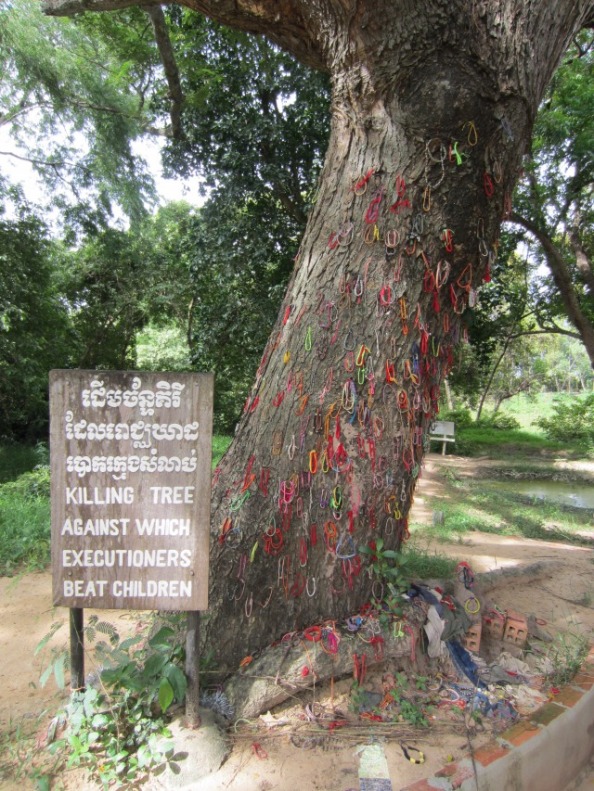 The Killing Tree, against which babies and small children were beaten to death
The Killing Tree, against which babies and small children were beaten to death
One of the most distressing sites is known as the ‘killing tree’. It was against this tree that the Khmer Rouge guards would beat to death small children and babies. Pol Pot apparently once said ‘to kill the grass you must also remove the root’. He believed that the entire families of supposed ‘traitors’ should be wiped out to prevent any other members of the family seeking revenge in later years. He also apparently said “It is better to kill an innocent by accident than let a traitor go by accident”. I couldn’t even begin to comprehend the twisted mind of someone who thinks like that.
Some of the over 5,000 skulls that have been laid to rest within the memorial stupa
The final stop at the site was a 37 metre tall Buddhist shrine known as a stupa that was erected as a memorial to all victims of the Khmer Rouge and to give some of the remains found at this site a place to rest. Over 5,000 skulls alone are housed inside in the stupa.
The 37 metre tall Buddhist memorial stupa that sits on the edge of the killing fields site…
Eventually it was time to leave and we both quietly and somberly made our way out to our waiting tuk tuk driver outside. It’s difficult to describe how you feel after visiting a genocidal site such as this – seeing and hearing of of such atrocities happening in such recent years brings on an overwhelming horror at what we as human beings can be capable of . The experience was shocking, stressful and incredibly confronting but one that I believe is essential for gaining a true understanding of Cambodia, it’s people and what so many of them have lived through – after all virtually any locals over 40 are survivors of those years.
The heinous atrocities of the Khmer Rouge regime must not be forgotten and I can only hope that through education and sites such as the Genocidal centre that the phrase ‘never again’ will ring true in years to come.

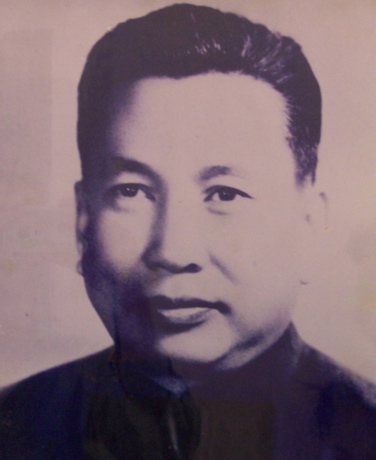


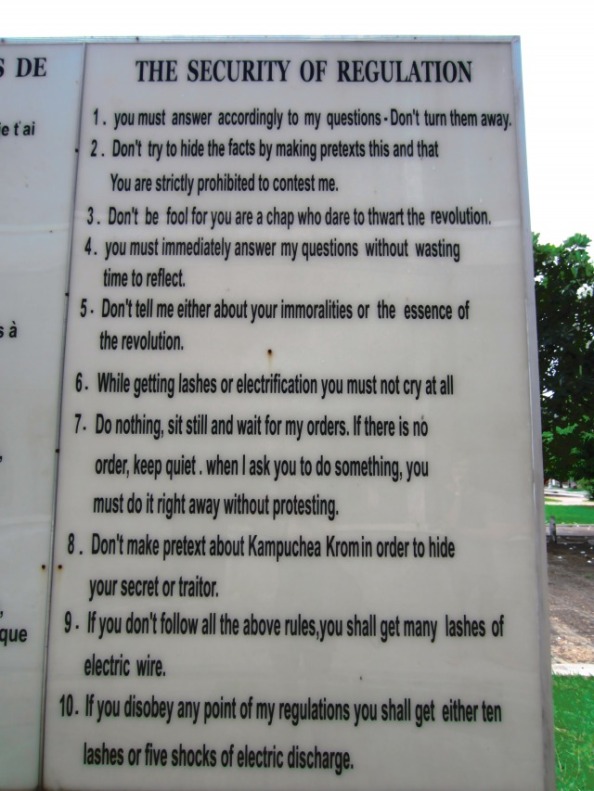
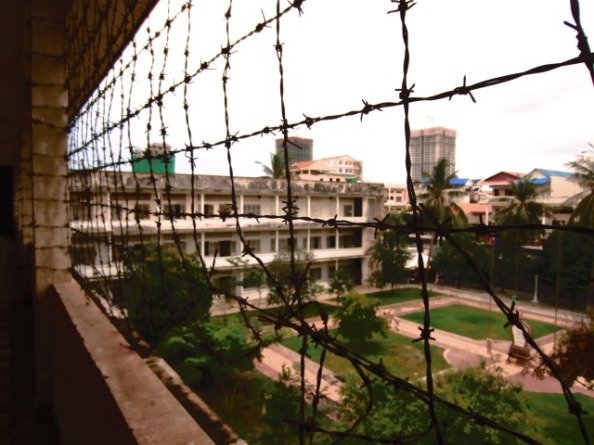

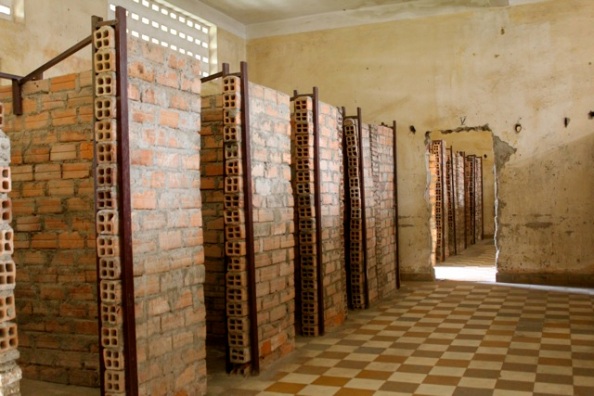


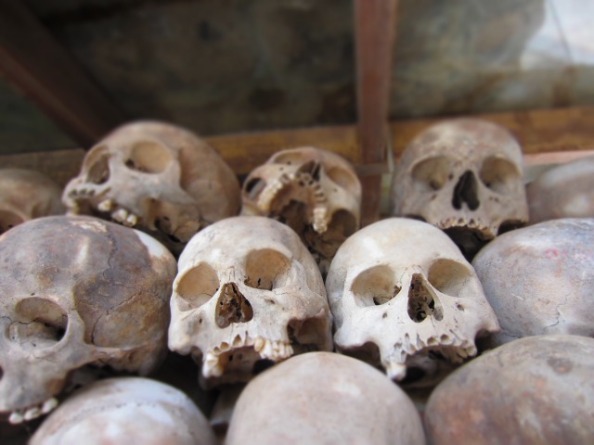

Alex Doherty
August 9, 2012
As is usually the case in western commentary on Cambodia and the Khmer Rouge there’s not a word here on the US bombing of Cambodia that many analysts see as a critical factor in the rise of Pol Pot. Beginning in 1965 more bombs were dropped on Cambodia than were dropped in all theatres of WWII making Cambodia perhaps the most heavily bombed country in human history (the other contenders being Laos and Vietnam in the same period). There’s also no mention here that after the Vietnamese invasion of Cambodia the US became a supporter of the remnants of the Khmer Rouge – preferring as they did Pol Pot’s genocidaires to the comparably humane rule of the government installed in Cambodia by the Vietnamese. I realise this is not a newspaper article but that the writer can blithely describe Cambodia’s darkest period as beginning in 1975 shows the powerful ability of the mainstream media and mainstream scholarship to disappear inconvenient truths. This is a good article on the US bombing: http://www.yale.edu/cgp/Walrus_CambodiaBombing_OCT06.pdf
The Exhibition List
August 9, 2012
Thank you for your comment Alex. My knowledge of the subject isn’t that strong, I had no idea about the US supporting the Khymer Rouge so it is great to be able to do some further reading. The media is indeed one of the most powerful weapons at any country’s disposal…
Alex Doherty
August 9, 2012
Hi Sally, if you’re interested this is a good book on the rise of the Khmer Rouge: http://www.amazon.com/How-Pol-Pot-Came-Power/dp/0300102623/ref=sr_1_6?s=books&ie=UTF8&qid=1344529235&sr=1-6
Naveed Chaudhry
August 11, 2012
Hi,
I like your blog and I’ve nominated you for the Very Inspiring Blogger Award.
Please visit my blog if you get a chance
Naveed
The Exhibition List
August 11, 2012
Thank you Naveed. Looking forward to reading more on your blog!
David Stewart
September 17, 2012
I went to S-21 on my birthday, actually, and then didn’t have the inclination to go to the Killing Fields after that. It’s a horrific chapter of human history, although unfortunately, it’s not isolated. I loved Cambodia when I went there and everyone was quite friendly.
The Exhibition List
September 17, 2012
I’m not surprised you didn’t visit David, its very upsetting. Where do you live in Korea?
David Stewart
September 17, 2012
In the city of Jeonju, about 2.5 hours south of Seoul.
Vicky
November 26, 2014
Hi, you should read a first hand account of the genocide. It’s called ‘First they killed my father’ by Loung Ung. It is incredibly moving and shows the life of a child under the rule of Pol Pot.